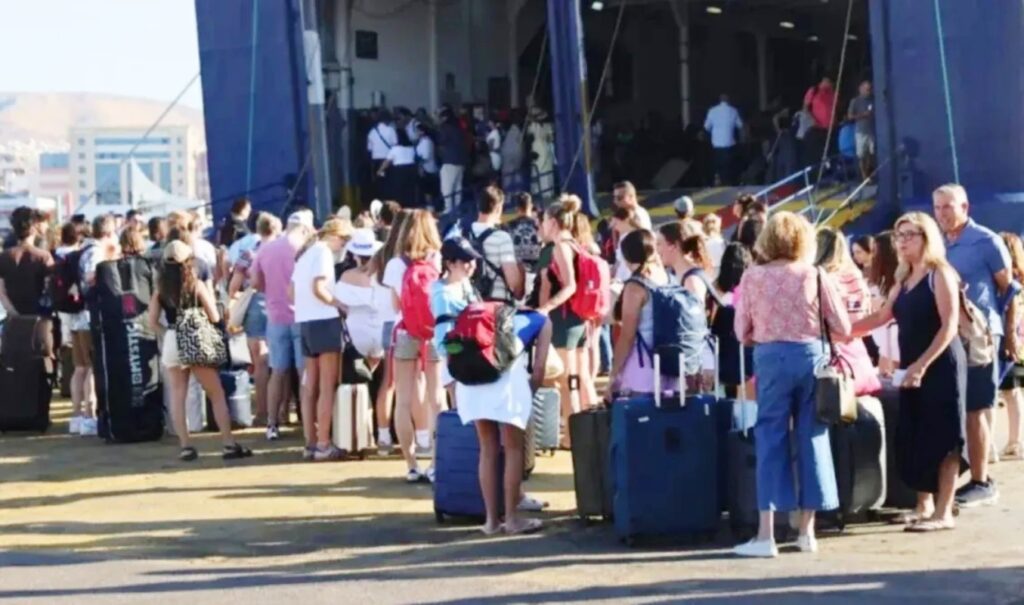The ferry landscape is changing in the Aegean Sea, with travelers seeking solutions that are closer, more economical and more functional. July’s ferry traffic, while overall increased, is not evenly distributed. Instead, it reflects a clear shift toward destinations that combine accessibility and affordability.
According to data from the Ministry of Shipping and Island Policy recently published by “TA NEA,” during July 1-19, over 650,000 passengers departed from major Attica ports. The numbers show increases – but only where transportation costs remain at reasonable levels.
Ferry record for Saronic Gulf
From Piraeus, traffic to Aegean islands increased by 6.7% (354,078 passengers from 331,596 last year), with almost the same number of routes. In the Saronic Gulf, the increase reached nearly 20%, with over 155,000 passengers and 100 additional routes.
Lavrio moved slightly upward (+1.39%), while Rafina showed a small decline of 1.19%, indicating that not all routes are equally favored.
Change in the “tourism chessboard”: Naxos, Poros, Aegina in the spotlight
Meanwhile, yesterday’s report by Lito Misiakouli on parapolitika.gr titled “Tourism: Upheaval in the Aegean chessboard – “Dive” for the “queens” Santorini, Syros, Mykonos, Naxos and Saronic Gulf take the baton” complements the picture, recording a clear shift of travelers toward alternative destinations, such as Naxos, Poros, Aegina and other nearby islands.
Traditional tourism “heavy hitters” like Mykonos, Santorini and Syros are recording noticeable decline, mainly due to increased transportation and accommodation costs. “The trend is clear: people prefer to go closer, where the ferry ticket doesn’t cost as much as a flight,” market sources emphasize.
Ferry ticket prices remained stable, but the perception of high costs persists
Although ticket prices remained stable this year, thanks to a 50% reduction in port fees and the use of cleaner but more expensive fuel, operational costs for companies remain elevated. Salary increases for seafarers add another pressure on final ticket prices. However, public perception is different: costs appear high – especially for large families or multi-hour destinations.
“Non-comparable figures” say ferry operators about international routes
Comparisons are often made between Greek ferry routes and European ones (like Copenhagen – Oslo). However, as shipping circles note in “NEA,” these are not comparable figures. International routes don’t apply VAT, while many involve only two ports. In contrast, a ship departing Piraeus for Rhodes “stops at” several intermediate islands, significantly increasing its port and operational expenses.
This summer shows us where things are heading
This July’s tourism picture reveals that Greek and foreign travelers are redefining their choices. Nearby destinations, less saturated ones and – mainly – more economically accessible ones are gaining ground. Whether this trend continues in August remains to be seen. For now, however, the numbers show a clear change of course in traveler preferences.




